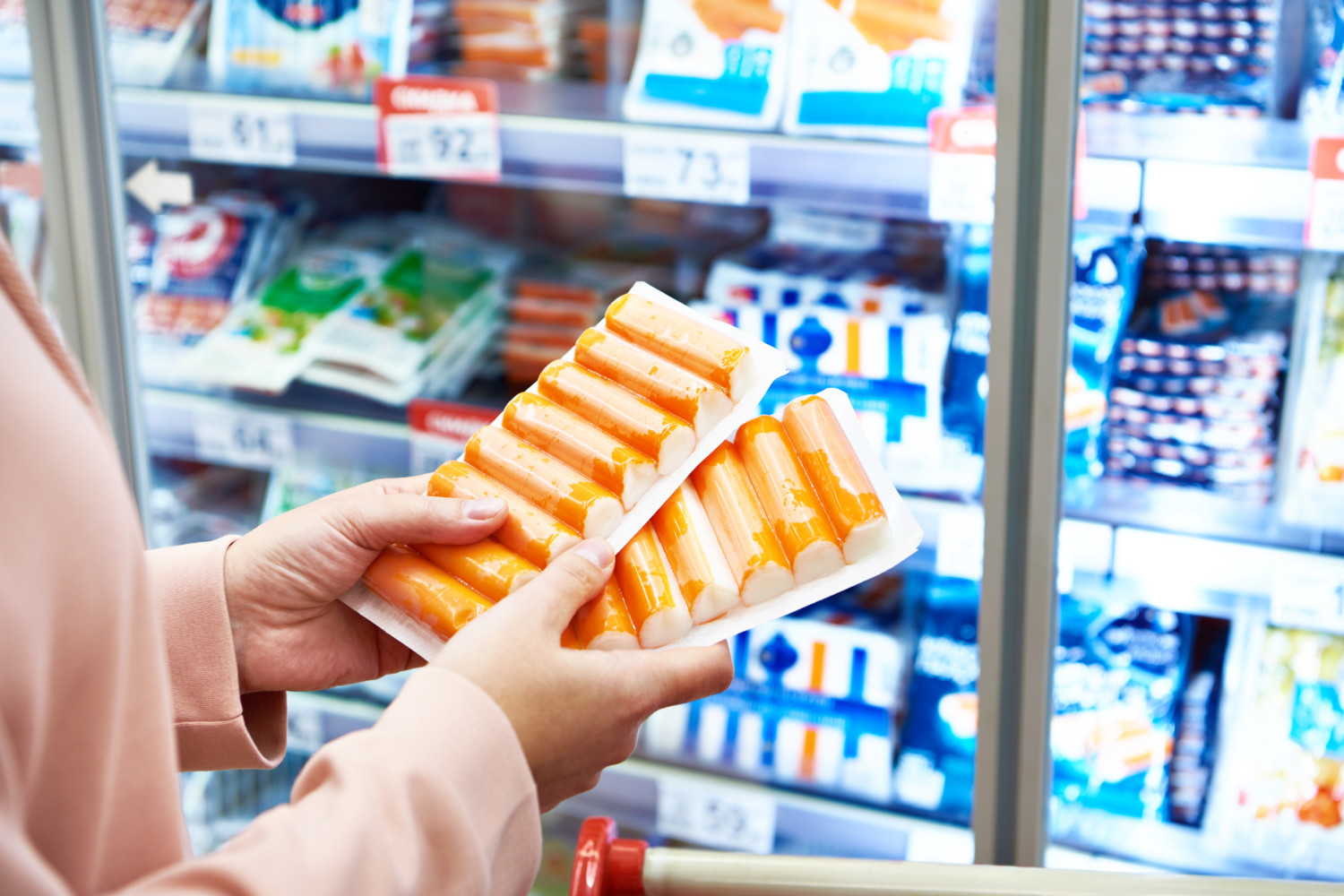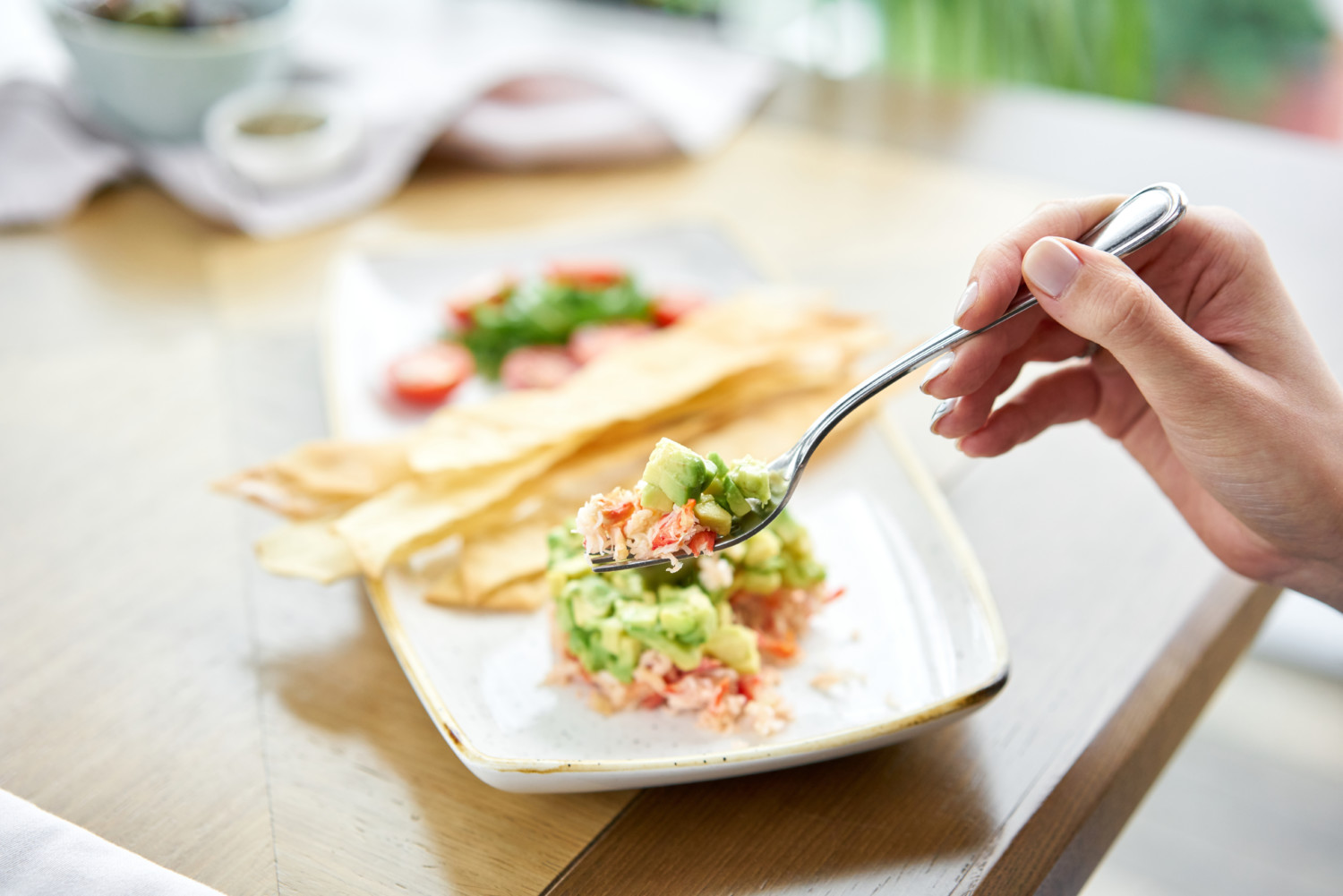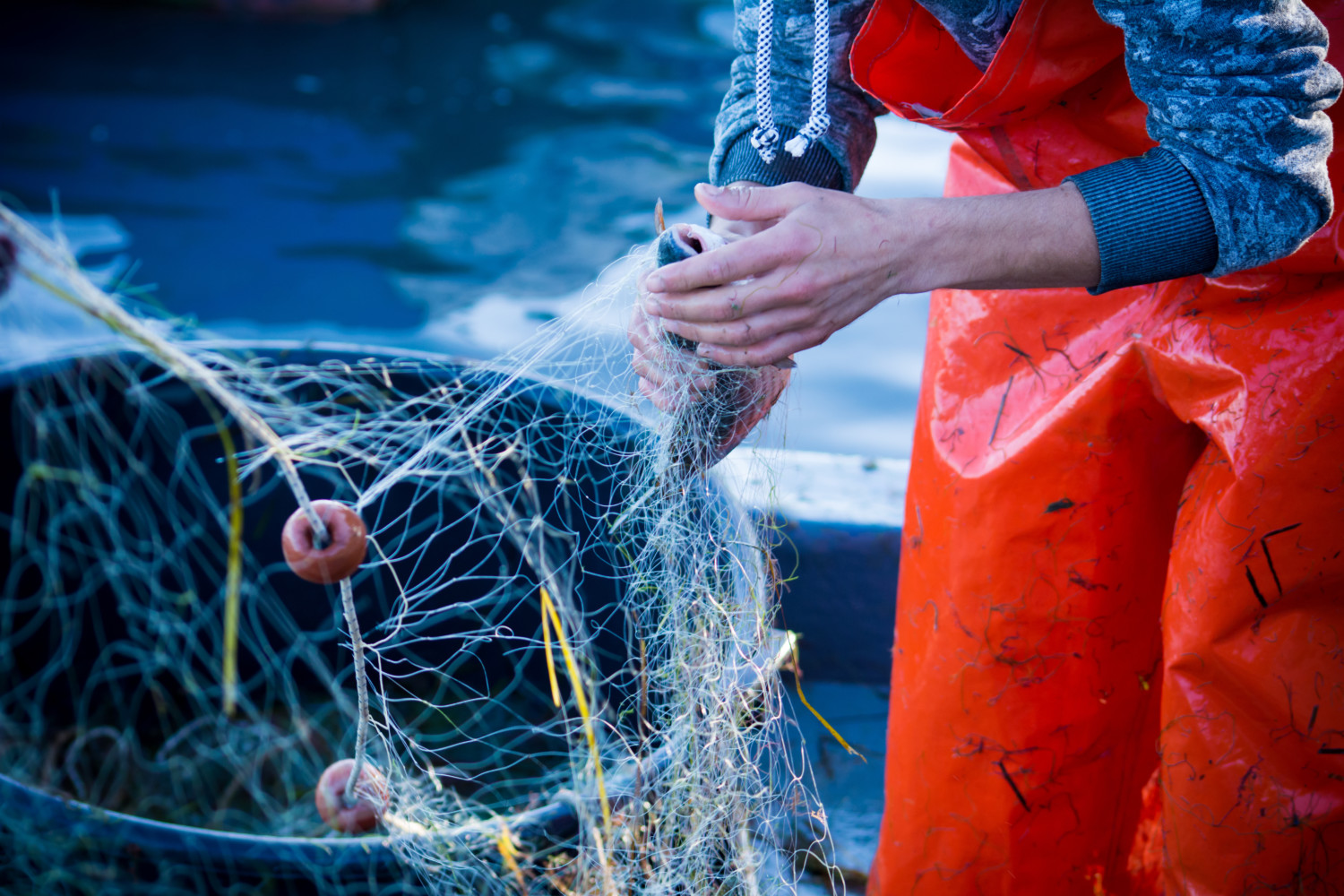You might have seen imitation crab meat, sometimes called crab sticks or “krab,” stocked with other seafood at your local supermarket. There is also a good chance you have eaten it and perhaps didn’t even know it.
Crab sticks have become a common stand-in for real crab meat in many restaurants and prepared seafood dishes available at grocery stores because of their much lower cost. But have you wondered what imitation crab really is?
What Is Imitation Crab?
With so many meat substitutes on the market, one might wonder whether crab sticks are a plant-based product. However, imitation crab is not like most meat alternatives you can find while shopping or dining out.
Real crab meat is what imitation crab sticks sometimes start with. Portions of the salty, slightly sweet meat are supplemented by surimi, which is a paste made from deboned fish from which fat and other unwanted bits have been removed. That paste is then formed into what look like logs, which is why imitation crab sticks are sometimes called hot dogs of the sea. Some brands of imitation crab are made entirely of surimi, with a bit of “crab extract” added for flavor.
So, if you’ve been wondering, “What is imitation crab, anyway?” you can rest assured that you are still eating seafood.

The primary ingredient in surimi is usually Alaska pollock, also known as walleye pollock. The fish has white flesh with a mild, delicate taste, a slightly coarse texture and a low oil content. The mild flavor, versatility and low price of pollock make it a popular option for imitation crab sticks, which are a more affordable and accessible option than crab legs for many shoppers and chefs.
Imitation crab sticks may also contain water, starch, sugar, salt, egg whites and vegetable oil, making the meat taste and feel more like real crab, and making it easier to freeze. The red outer layer of the crab sticks comes from red food dye. This ingredient doesn’t alter the flavor of the food but helps it look more like the real thing.
Is Imitation Crab Healthy To Eat?
It will not surprise you to learn that real crab meat has greater nutritional value than imitation crab. However, imitation crab can be incorporated into a healthful diet. It is low in fat, calories and cholesterol. While it does have some vitamins and minerals, like vitamin B12, zinc and selenium, it doesn’t have as much as real crab meat, partly because some nutrients are rinsed away during processing.

Generally speaking, imitation crab is safe to eat, but because it is made using other types of seafood, it can spoil and cause illness if consumed after the best-by date.
You can safely freeze imitation crab meat for six months, according to the Los Angeles Times. Unopened in the refrigerator, the meat is safe to eat for three to five days. Discard any imitation crab that is past its printed expiration date or if it has a foul, fishy smell, slimy surface or unpleasant taste.
It is important to note that since imitation crab often contains either small amounts of real crab meat or crab extract, people with significant shellfish allergies are still advised to avoid eating it.
Is Imitation Crab Sustainable?
National Geographic reports that overfishing poses a significant threat to the world’s oceans, and that some types of crab fishing may be unsustainable. However, imitation crab made using wild-caught Alaska pollock comes from one of the most sustainable seafood products in the world.

Alaska pollock is caught using nets that are not in constant contact with the ocean floor, which is a more sustainable method than those involving dragging nets across the ocean floor, damaging the habitat. By-catch is a harmful effect of nets that drag the ocean floor, as other marine species are unintentionally caught and often killed. The fishing methods used to catch Alaskan pollock have a low by-catch rate.
What Imitation Crab Can Be Used For
Restaurants often use imitation crab while making dishes such as seafood salads, dips, sandwiches and even sushi. You have likely munched on imitation crab meat if you have ever grabbed a California roll from the grocery store.
Imitation crab should be clearly listed on the menu, lest you think you’re paying for the real thing, but some eateries use the phrase “crab sticks” instead. When in doubt, you can always ask the server or chef.

Imitation crab meat is pre-cooked, making it an ideal addition to cold dishes, such as seafood dip or “crab” salad.
However, you can also use it in hot recipes, just like real crab meat. For instance, you could fill wonton wrappers with cream cheese and imitation crab to make “crab” rangoon, or mince it and mix it with crushed crackers, mayo, Dijon mustard and a few other ingredients to make savory “crab” cakes. You can even enjoy crab sticks fresh out of the package as a snack.
If you love the sweet, briny flavor of crab meat and want a more affordable, sustainable option for frequent meals and snacks, imitation crab meat might be something you want to stock in your fridge or freezer. You can always crack open the real thing on special occasions.
This story originally appeared on Simplemost. Checkout Simplemost for additional stories.


